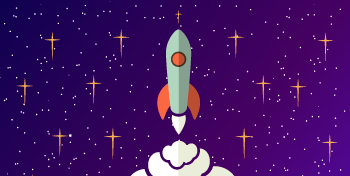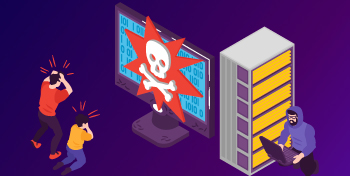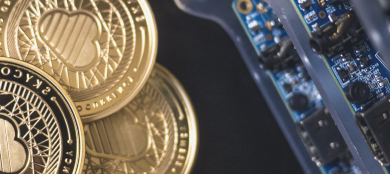DAO is a new magic word in the world of cryptocurrencies. This means a “decentralized autonomous organization”, a digital company without a manager and with rules that are difficult to change. With the help of a decentralized database of Blockchain technology, employees are organized via the Internet, coordinate the future of the project and place orders.
If you log on to Coinmarketrate.com If you find a description of this project, you will see that, in fact, the DAO is a search for new ways to organize work and, above all, cooperation. These new forms underlie the central idea of cooperation between participants on an equal basis.
In this context, topics such as stakeholders, instead of the shareholder economy, and ecosystems, instead of centrally controlled platforms, are much better known. Decentralized autonomous organizations now represent a special form of implementation of such principles of cooperation.
Thus, the idea of the DAO should concern everyone who believes that in the future there will be non-hierarchical forms of cooperation between individuals, as well as between companies.
What is a DAO?
In principle, the explanation of the DAO follows from the very name – “Decentralized autonomous organization”. As the name suggests, this is a form of organization:
Autonomous: i.e. has the ability to act on its own initiative and be independent of individual internal and external players.
Decentralized: in other words, the decision-making process is based on the consensus of the participants, and does not depend on the central location and central management.
Every organization requires rules. The set of DAO rules is encoded in the form of immutable software, the so-called smart contract. The smart contract is the foundation of the DAO. To ensure the immutability and autonomy of this smart contract, it works in the blockchain infrastructure. This transparent and non-manipulative decision-making provides the basic principle of autonomous DAO action. No matter which member initiates the action in the DAO, it will always lead to the same result according to the coded rules.
This can best be compared to the rules of procedure of the organization in the software, which are embedded in the block chain. Unlike the rules of procedure written down in paper form, the smart contract leaves no room for interpretation for the DAO, which should reduce the likelihood of conflicts between participants.
Every organization requires members. The purpose of the DAO is to create equal opportunities for participants. After defining the initial rules, the DAO needs to start recruiting members. In the blockchain world, this is usually done by issuing tokens. Thus, token holders are members of the DAO and can, in accordance with the coded rules of procedure, submit proposals, participate in voting and participate in the tasks and maintenance of the DAO. You are familiar with this process via the example of the validators of the DecimalChain blockchain project. Then coordination is carried out using understandable processes built into the software.
DAO as the basis of modern cooperation
DAO can be used for almost all forms of cooperation. Cooperation between people can be displayed in the same way as cooperation between companies.
Examples:
- Joint financing of assets (participation);
- Coordination of joint provision of services (cooperative);
- Use of shared resources (sharing).
The main driving forces of the DAO are changes in our entire life, and the desire for independence and self-determination. While in the past, dependent and full-time work was “normal”, in today’s world of work, freelance work is increasingly being used. If a person’s range of action was greatly limited by official duties, then today at least part of the work can be done from anywhere as a matter of course.
It used to be perfectly normal to buy things and own them, today simple use matters more than owning a product. All these changes require and promote the structures of cooperation and participation from which the idea of the DAO was born.
Is the offer relevant for traditional companies?
Currently, DAOs exist only in the cryptocurrency world. They are mainly used to coordinate the cooperation of individuals. But the principles of the DAO open up great opportunities, in particular, for companies. Due to trends such as the sharing economy and the growing demand for connected services instead of individual products, companies are often able to provide services only on the network. Today, companies have two alternatives. Classic is cooperation within the framework of relations with suppliers (supply chain). As a rule, here the control is carried out by the company standing at the top of the chain. An alternative to this is cooperation platforms.
However, in the platform economy, there is a risk of market monopolies on the platform, due to data aggregation and related information asymmetry. The DAO, with their approach to displaying collaboration that is not controlled by any of the participants or the operator of the digital collaboration solution, can offer a counter model.
Wrapped DAO – a way of legal protection of organizations
In their main idea, the DAO enshrines the principles of a decentralized organization:
- Management without hierarchies
- Full transparency of structures and rules
- Equal opportunities for all participants, regardless of the time and place of entry
- Trust through reliable protection from manipulation
In this respect, they differ from classical organizational principles, and therefore are often considered as an alternative to classical corporate and organizational forms.
Of course, this is impractical, because every DAO that should have an impact needs a legal framework. Unless this is explicitly defined, DAOs are likely to be treated as partnerships with all the difficulties involved.
Currently, attempts are being made to dress the DAO as a construct hiding under the guise of classical legal forms, such as cooperatives, associations or corporations. These promising approaches can help the DAO jump out of the cryptocurrency world.
Conclusion
In today’s cryptocurrency world, the DAO is a matter of course, but hardly a problem outside of space. If this needs to be changed, the DAO should not be understood as a fixed construct (with blockchain, smart contracts, etc.), but as a path.
Regardless of the means used, attempts are increasingly being made to find new forms of cooperation. There are still several hurdles to overcome before this becomes the new norm.
In addition to the already mentioned legal complexity, it is also necessary to solve the technical and social complexity. So, technically it is not easy to bring complex sets of rules into the code. However, for less complex problems, frameworks such as Aragon already exist to run a DAO without extensive blockchain know-how.
In practice, the biggest problem is social complexity. Openness and active participation are required from all participants. The initiators of a cooperative or ecosystem should create incentive and control systems that function stably in the long term. After the creation of a cooperative, members should be willing to actively participate in its expansion. Such cooperative systems do not arise overnight. Based on the common goal, definition, structure and legal consolidation of a cooperative organization, this is a path worth taking.


